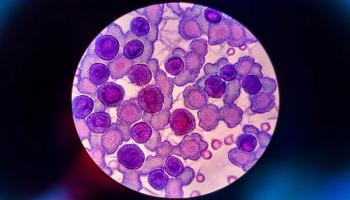
- Pharmacy Careers Fall 2013 0
How Does the Media Portray Pharmacists? Hero, Villain, or Most Accessible Health Care Provider?
New research examines the portrayals of pharmacists in television and in the movies.
For about a year, pharmacy student Amy Yanicak has watched a lot of television.
It was all in the name of science though, as Yanicak, a second-year pharmacy student at the College of Pharmacy at the University of South Carolina, Brandon Bookstaver, PharmD, associate professor of pharmacy at the college, and Phillip Mohorn, PharmD, clinical assistant professor of pharmacy at the college, and their research team examined portrayals of pharmacists in American television and movies from 1970 to the present day.
“We really discussed how no project like this had ever been done before,” Yanicak said of the topic’s introduction during Dr. Bookstaver’s classes. “So while we’d seen other studies delving into the perception of doctors on television shows and movies, there had never been something done this in depth on the portrayal of the pharmacist. We realized there’s such an absence of these professionals in the movies and TV that we watch every day.”
The research springs from an interest Dr. Bookstaver developed in conjunction with a former colleague regarding the perception of the pharmacist in television and movies.
“While I don’t think that movies and television drive thought processes or actions completely by any means, I do think movies and TV are a reflection of the perception of a non-pharmacist on the profession itself,” Dr. Bookstaver said in an interview with Pharmacy Times. “Non-pharmacists are typically the ones creating the characters and writing the scripts.”
Looking for Pharmacist Characters
With a grant from the University of South Carolina and a research outline determining how to assess the portrayals they’d soon watch, the researchers began tracking down the footage they’d need for the research. They found close to 300 pharmacist portrayals by searching IMDB, Bing, and Google, and by setting up a submission website and alerting several professional organizations and their college to their search. The team also worked with community pharmacists and other evaluators to validate their characterization of the portrayals and to critique their research methods.
“We didn’t just want to look for absence of a pharmacist in a drama or a comedy or a suspense thriller because there may be no reason in the script to have a pharmacist,” Dr. Bookstaver said. “So we really looked for portrayals, and we looked for whether this is a negative, neutral, or positive portrayal, and then we focused on whether there was presence or absence of a pharmacist in medical-themed shows as well as how they were portrayed. I think if it’s a medical-themed show, we can at least more easily justify having a pharmacist there.”
A few well-known portrayals, including Mr. Gower in It’s a Wonderful Life, John Wayne’s portrayal of Tom Craig in In Old California—John Wayne’s father was a pharmacist, Dr. Bookstaver noted—and Ellie Walker in The Andy Griffith Show, had to be excluded because they were outside the 1970 scope, Dr. Bookstaver said.
Researchers also excluded several portrayals from within the specified time period because a pharmacist did not actually appear in the clip, or because researchers were unable to locate the footage. References to the pharmaceutical industry, such as drug representatives, were also excluded from the research.
Despite their efforts, some of the footage proved a challenge to find. Still, armed with a Netflix account and the assistance of 5 student data-collectors, the researchers set out to watch—and then re-watch—the remaining 205 items.
“I wish I could tell you how many hours it was,” Dr. Bookstaver said. “If you estimate about a 45-minute show … You’re talking a lot of hours—probably 200 to 250 hours. But with re-watching, we’re probably talking closer to 400 hours.”
Infamous Footage
The most infamous modern footage included television shows Two and a Half Men, Nurse Jackie, Desperate Housewives, Curb Your Enthusiasm, and Hannibal.
Pharmacist roles in televisions and movies have increased since the 1970s, though movies portraying pharmacists remain rare, the researchers determined.
“You saw a steady increase all the way through,” Dr. Bookstaver said. “Right now, we’re at 66 portrayals at summer of 2013. It’s probably due to a lot of reasons. One, there’s a lot more television shows than movies … Two, the data is better the later you go. In the 1970s, there might not have been a lot of things that were recorded accurately, so we probably lost validity as we got further and further from the present day.”
Surprisingly, while pharmacists appeared in horror movies, police dramas, and comedies, they did not often appear in medical-themed television shows.
In the majority of footage, pharmacists tended to appear in very minor character roles, and tended to be portrayed negatively—meaning they could appear as either a villain or a victim, the researchers said.
“I think the most worrisome part is the consistency in the negative portrayal,” Dr. Bookstaver said. “It’s just very discouraging.”
Most Trusted Profession
The tendency for negative portrayals led the research team to compare its findings with pharmacists’ consistent position as one of the most trusted professions, and as one of the most accessible health care providers.
“We understand that certain stereotypes may make for better comedy or better drama; however, there seems to be quite a disconnect as to why a pharmacist would be a villain or victim so often compared to when they could be the hero,” Dr. Bookstaver said. “There’s really no reasons a pharmacist could [not] be a hero; [it’s] just as likely as a nurse or a physician or someone outside of the health sciences.”
In addition to submitting their abstract to the American Pharmacists Association and the American Society of Health-System Pharmacists, Dr. Bookstaver, Yanicak, and Dr. Mohorn intend to present the research at state meetings and regional and national forums.
Their initial research produced a second study focused on pharmacist portrayals and medical data accuracy in medical television shows as well—so the research team will likely spend several more hours watching television. Their research found approximately 56 medical television shows running for at least 1 season since 1970.
“We’re definitely sick of watching shows that might have alluded to having a pharmacist in them, since the pharmacist isn’t appearing for most of it,” Yanicak joked. “There’s definitely been a wide range of different kinds of shows we’ve had to watch.”
Articles in this issue
about 12 years ago
Worlds Apart: Health Care and Pharmacy in Chinaabout 12 years ago
Test Your Skills: Portion Controlabout 12 years ago
Employment Contract Clauses: Are There Long-Term Implications?about 12 years ago
Dress for Successabout 12 years ago
2013 Next-Generation Pharmacistâ„¢ Awardsabout 12 years ago
RESPy Recap 2011-2013about 12 years ago
The Expanding Role of the Specialty Pharmacistabout 12 years ago
Navigation Skills: The Interviewabout 12 years ago
Gadget Guideabout 12 years ago
A New Era for PharmacistsNewsletter
Stay informed on drug updates, treatment guidelines, and pharmacy practice trends—subscribe to Pharmacy Times for weekly clinical insights.











































































































































































































